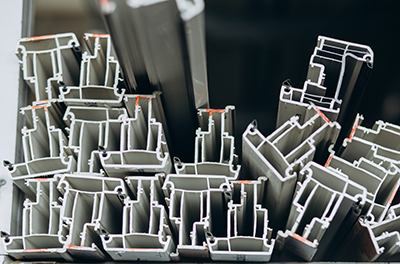Guide to Importing Aluminium Extrusion Products from China
Admin
2025-06-07
China is one of the world's leading manufacturers and exporters of aluminium extrusion products like profiles, round bars and tubes. Whether you're in construction, automotive, industrial design or home furnishings, importing aluminium profiles from China can offer high-quality products at competitive prices.
However, to ensure a smooth and profitable importing experience, it’s crucial to understand the entire process, from selecting suppliers to understanding regulations and shipping.
This guide covers everything you need to know about importing aluminium extrusion products from China.
Why Import Aluminium Extrusions from China?
According to the AL Circle report on Global Aluminium Extrusion, China is the major exporter of aluminium extrusions, accounting for approximately 25.8% of global exports. But what makes China a preferred sourcing destination for aluminium extrusions?
1. Extensive Manufacturing Base
China has a well-developed aluminium extrusion industry, with large-scale manufacturers such as Beijing Only Aluminium Industry Co., Ltd., which operates over 60 extrusion lines and advanced auxiliary equipment. These facilities serve both domestic and international markets, ensuring high output and reliable supply.

2. Competitive Pricing
Due to economies of scale and efficient supply chains, Chinese manufacturers often offer lower prices compared to their counterparts, without compromising on quality.
3. Customisation Capabilities
Chinese suppliers offer comprehensive customisation services, including anodising, powder coating, mechanical processing, cutting, punching and CNC machining.
Step-by-Step Guide to Importing Aluminium Extrusion Products
Step 1: Finding an Aluminium Extrusion Supplier
Sourcing from China offers tremendous cost benefits, but it’s only worth it if your supplier is reliable. Online marketplaces like AL Biz can be a great starting point.
Additionally, read about the company, review their product specifications and determine if they meet your requirements. If possible, go through their customer reviews, look at how responsive they are to inquiries and check whether they’ve been vetted by third-party verification services.
Step 2: Vet Supplier Quality
Request product samples and factory certifications. If travel isn’t possible, hire third-party inspection agents to verify legitimacy and production capabilities.
Step 3: Sign a Contract
Before any production begins, make things official. A formal import contract lays the groundwork for accountability. It should clearly outline the specs, quantity, unit price, delivery timelines, payment terms and quality standards.
Step 4: Choose the Right Shipping Method
Shipping isn’t just logistics; it’s a strategic decision for your business. Here’s how to pick the right method:
- If you’re moving large volumes and have the luxury of time, sea freight is your best bet for cost efficiency.
- But if you’re on a tight deadline or transporting high-value profiles, air freight, though pricier, might be worth it.
- Land freight can be practical for nearby countries.
Ultimately, your shipping method should align with your budget, urgency and delivery expectations.
Step 5: Documentation
You’ll need a solid set of documents to clear customs smoothly. At a minimum, prepare:
- Commercial Invoice: Itemised list of goods and pricing
- Packing List: Quantity, weight, dimensions
- Bill of Lading: Official shipping document from your freight provider
- Certificate of Origin: Certifies the country of manufacture
Each document must be accurate. Mistakes can lead to delays, fines or even seizure of your goods.
Pro Tip: Bridge language gaps through bilingual documentation or agents. Confirm technical discussions in writing to avoid misunderstandings.
Step 6: Understand Customs and Taxes
Import duties and VAT/tariffs vary by country. Estimate these costs early and include them in your total landed cost calculations.
Note: Underestimating tax exposure is one of the most common mistakes new importers make and it can quickly erode your margins.
Step 7: Final Delivery and Inspection
Once cleared through customs, you have a choice: use a door-to-door logistics provider or a local freight handler for final delivery. Either way, ensure the handler is reliable.
Aluminium extrusion products can be long, heavy and prone to bending. So poor logistics can easily turn a good order into a damaged shipment. Before accepting delivery, conduct a final inspection to confirm that everything matches your specifications.
Looking for Chinese Aluminium Extruders?
Importing aluminium extrusion profiles from China isn’t just about getting a good price. It’s about building a process that minimises risk and ensures consistent quality. To simplify your sourcing journey, send your RFQ to a wide network of Chinese extruders that are ready to supply aluminium extrusions.
Frequently Asked Questions
1. Are Chinese aluminium extrusion products of good quality?
Yes, many Chinese aluminium extrusion manufacturers offer high-quality products. However, due diligence and quality inspections are crucial to ensure consistent standards.
2. Where can I find reliable extrusion profiles from China?
You can find reliable extrusion profiles from China on platforms like AL Biz. Multiple extrusion reliable extrusion companies who export overseas are listed on this platform. You can contact the suppliers directly or post your RFQ.
3. What are the customs requirements to import aluminium extrusion profiles from China?
To import aluminium extrusion profiles from China, you’ll need accurate HS codes, import licenses (if applicable) and to comply with anti-dumping duties in some countries. To keep up with the latest updates in the aluminium industry, check out AL News.
4. Does the recent anti-dumping duty by India on Chinese aluminium affect extrusion products?
No, the anti-dumping duty recently imposed by India applies only to aluminium foil (thin sheets up to 80 microns thick) imported from China. It does not cover aluminium extrusion products, such as profiles, round bars and tubes.
Categories
Raw Materials
Scrap
Consumables
Primary Aluminium
Secondary Aluminium
Equipment
Technology
Downstream Products
Finished Products
Utilities
Services
Others
Recent Blogs
Subscribe to newsletter
Connect with us











